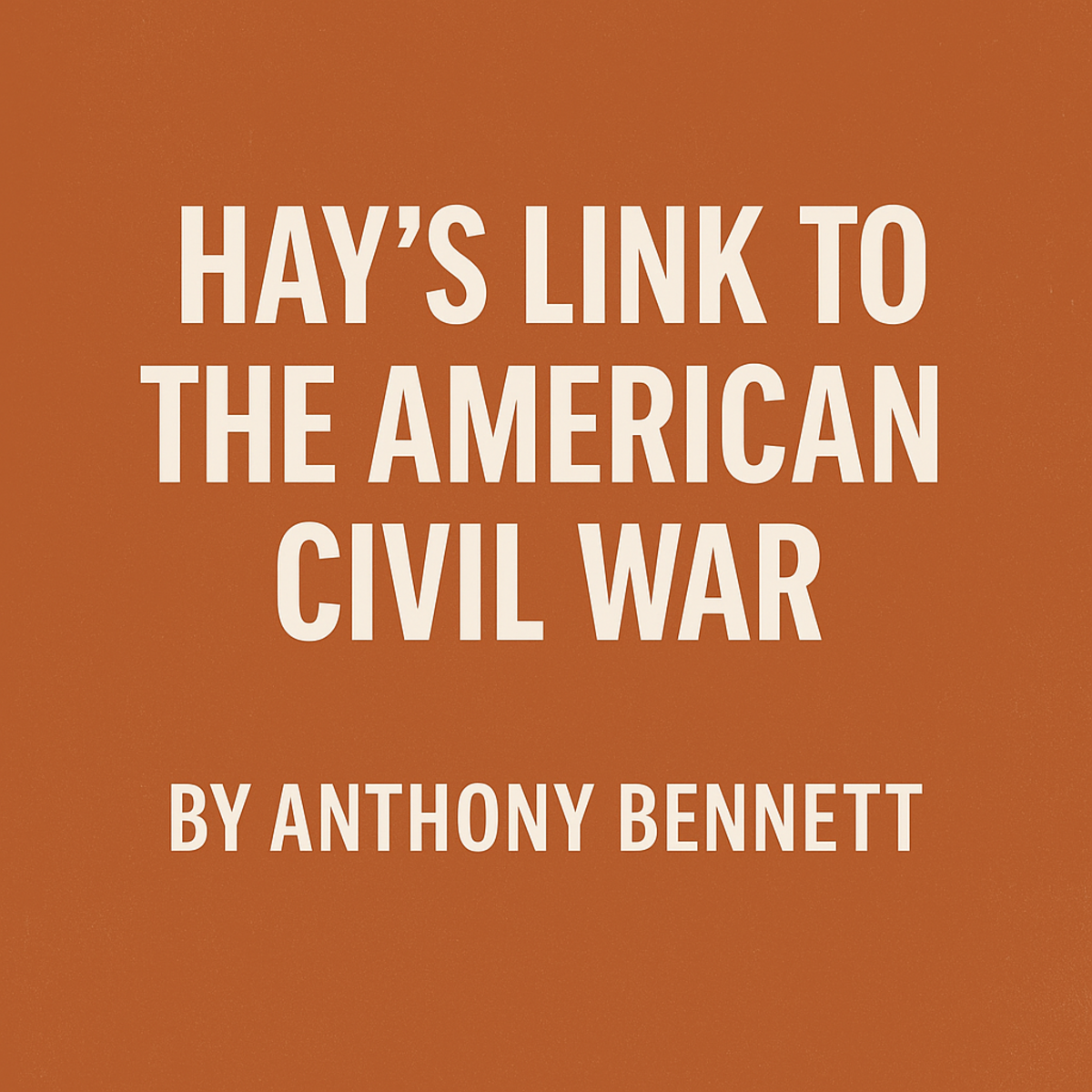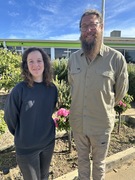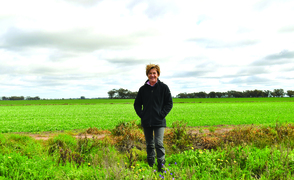Post script - the Civil War's William Henry Sheppard
Krista Schade
15 June 2025, 5:00 AM

From Gettysburg to Greenham Park — uncover the forgotten life of Hay’s own Civil War soldier and his resilient wife Jane.
As researched by American Civil War buff and former local Anthony, Mr Sheppard emigrated to Australia and settled in Hay.
His obituary, published in The Riverine Grazier on October 12, 1934, rounds out his story.
"A very old resident of Hay and district who held a unique distinction in that he was probably the only survivor of the great American Civil War, residing in New South Wales at least, Mr. William Henry Sheppard, died early yesterday at the residence of Mrs. Jas. Whyte, his step-daughter, with whom he had resided for many years past.
Mr. Sheppard was a native of the Northern States, and at the age of 16 years he joined up with the Northern army in the beginning of the deadly conflict between two sections of one people over the great slavery question of the day, and in which the Southern States sought to secede from the union.
Sheppard was attached to the 142nd Pennsylvania Regiment, and fought under Generals Geo. McLelland, Ambrose Burnside and Joseph Hooker.
He was present at the historic struggle of Gettysburg, where both the Union and the Confederate forces sustained very heavy casualties in a three days' battle, the Union forces having the satisfaction of holding the field.
He also took part in the Battle of the Wilderness, under General Wadsworth, a cousin of Dr. J. W. Kennedy, formerly well known in Hay.
At the Battle of Fredericksburg in 1862, Sheppard was wounded and lost three of his best pals in the army.
He came to Australia in 1870, and to the Hay district in 1879, and he had resided here ever since, for many years following the calling of blacksmith in Hay and on district stations.
He married a widow, Mrs. Guernsey, who died some thirty-three years ago.
There was no family of the union.
Deceased has a surviving sister, Mrs. Kate Manaham, of Iowa, U.S.A.
Mr. Sheppard, who would have been ninety years of age next March had he lived, retained all his faculties right to the end, and being blessed with an excellent memory could tell many interesting stories of the Civil War and of the doings of the opposing armies in that bloody struggle.
When the American fleet visited Sydney some years ago he undertook the trip, and basked in the shadow of "Old Glory" once more for a brief period.
He also met a compatriot, Thos. Geo. Redmond, who had served in the same company.
The two veterans regularly corresponded till Redmond's death a couple of years or so ago.
It was claimed at the time of the re-union that there were only three Civil war participants then living in Australia, so that it is quite likely Mr. Sheppard was the last one.
He was keenly interested in the land of his birth to the last.
Latterly he had been failing, but had not been compelled to lay up.
Yesterday morning Mrs. Whyte went to his room, and was told by Mr. Sheppard that he intended to get up.
She advised him not to do so till the rain ceased.
About a quarter of an hour she went back, and was shocked to find that he had passed away.
The deputy coroner dispensed with an inquiry.
The funeral took place this afternoon."
Despite the claims made in the obituary, 60 American Civil War soldiers and nurses are buried in NSW, with many more laid to rest across the country.
Life in Hay
In Hay Mr Sheppard was known as "Harry" and lived in Simpson Street, according the estate notice, placed in The Grazier in July 1935. (See notice, at right)
The property in Simpson Street was auctioned by Messrs. W. G. Butterworth and Co. In 1936, as the estate was finalised.
Further searches of Grazier archives locates a court news item, published in 1886, which could be the very same William "Harry" Sheppard, as the dates align.
"Harry Sheppard, charged with attempting to rescue a prisoner last Tuesday, laughed very heartily as the evidence was given against him.
"In the middle of the cases Mr Threlkeld, who is not deficient in humour, albeit of a Scotch kind, remarked: 'You had better stop until the end of the case before you laugh.'
"There was no laughter on Mr Sheppard's face when the case was over."
According to The Grazier, Harry Sheppard was also fined in 1889 as a parent of a child not attending school, so we could assume this involved his step-children, the children of Mrs Guernsey.
No stranger to the courts, Harry again appeared in the Grazier, in 1890 this time for a breach of the peace.
"At the Police Court this morning, before Mr John Andrew, J.P., Harry Sheppard was charged on summons with using insulting words to Fred Cherry, whereby a breach of the peace may have been occasioned.
"The accused did not deny using the words, and pleaded that he was under the influence of liquor at the time.
"Mr Cherry said that he did not wish a heavy penalty to be imposed, he only wanted to show that such language could not be used in the street with impunity.
"The accused was fined 10s and costs."
If it is indeed the same William Henry "Harry" Sheppard he frequented the courts at Hay, sometimes over the ownership of a dog, sometimes for illegally occupying crown lands, and yet he is also noted among the subscribers who donated towards the building of the Hay Hospital.
It seems Harry spent his final colourful days in good company in Hay, looked after by the daughter of his late wife.
Jane Eagan / Guernsey / Sheppard - the wife of the Civil War soldier
The widow of Private Harry Sheppard has a notable life of her own, before she married the Civil War soldier.
Jane (or perhaps even Mary Jane) Caldwell was born to Parents Thomas and Jane in August 1850, in Ayrshire, Scotland.
Historic records show that in 1863 she wed Denis Egan and together they had three children - Bridget, Thomas and Ellen Jane.
In 1873 she wed Thomas Guernsey, and bore five children - Ada Bertha, Martha Alice, Jane Elizabeth, a baby boy, who did not survive and Alice.
In February 1880 a police report published in the Bendigo Advertiser reported that Jane had been charged with bigamy.
Witnesses gave evidence that they had been present at the wedding of Jane and Denis Egan - Denis was present in the court, as was Jane's second husband Thomas Guernsey.
Thomas stated to the Court that he knew Jane, but not Denis.
The matter came before the Court when Jane sought treatment for a broken collar bone, telling the doctor that Denis had hit her, and broken her bone, for the second time.
After being sent for sentencing on the bigamy charge, Thomas Guernsey was tried for the repeat assault on Jane, but was acquitted.
Evidence was given that the injury occurred "not intentionally, and after great provocation."
The charge against Thomas was dismissed, on the grounds it had been "wrongly brought."
During the sentencing hearing, Jane's counsel argued that the charge caused no injury to society and was brought by a cruel and vindictive man, namely Thomas Guernsey.
The pleas for mercy were heard. Jane was convicted but served no term of imprisonment.
Melbourne newspaper, The Argus, reported on the case.
"Jane Guernsey, convicted of bigamy, was ordered to be imprisoned only until the rising of the Court, as his Honour considered she had suffered enough punishment for her offence.
"The prisoner, he said, had been treated in a most cruel and dastardly manner by her second husband (Guernsey), and the case was altogether a most exceptional one."
How Jane came to believe she was free to wed a second time remains a mystery, and during the court case, it was simply stated that she had been deserted by Denis Egan.
The Argus reported Jane had told Thomas after their marriage that she wished to leave him, as she discovered Denis was still alive, and they had lived apart for some time before the charge of bigamy arose.
How Jane and her children then came to live in Hay is also unknown, but we assume her previous marriages were annulled by the time she wed Harry.
Unfortunately for Jane, she and Sheppard also had their troubles.
In 1898 The Hay Standard newspaper reported a serious assault on Jane, by then husband Harry.
Jane required medical treatment for a very serious head wound, inflicted by Harry whilst he was intoxicated.
Given her dubious choice of men, Jane appears to have been a kindhearted women.
In 1900, as reported by The Riverine Grazier, Jane informed Police she had given shelter to a homeless boy, until her charity ran low, and she could no longer afford to feed him.
The Court decided to send the child to an industrial school in Port Jackson.
Jane's death notice, placed by her children in The Grazier in 1901, also gives an insight to her care of her brood.
"In loving remembrance of our dear mother, Jane Sheppard, who died August 3rd, 1901.
Gone from our midst but not forgotten, Loving mother, thy image we keep, Never till life's end shall we forget thee, Shine in our hearts in the peace of thy sleep.
Inserted by her loving daughters, A. A. and J. Guernsey."
When Jane died she was aged just 51.
She is buried at Hay Cemetery.
Do you have a story to share?
The Riverine Grazier is always keen to research the stories of this region of NSW, or speak to those who remember how our community landscape once looked.
You can contact Kimberly ([email protected]) or Krista ([email protected]), give us a call on 02 6993 1002 or drop into 95 Lachlan Street.
Special thanks once again to Anthony Bennett for his original story, which prompted this postscript, and was published last week.
NEWS
SPORT
RURAL







